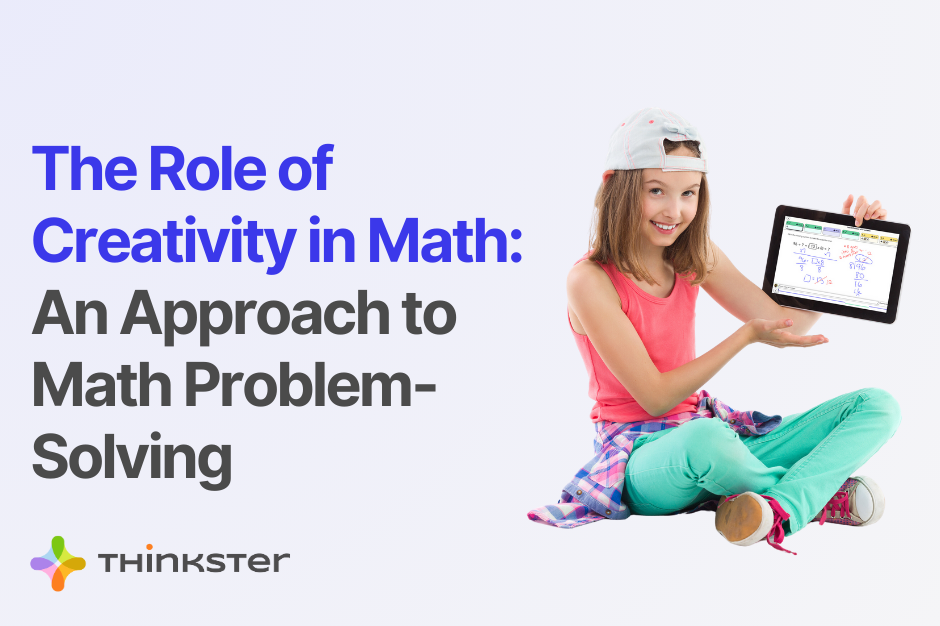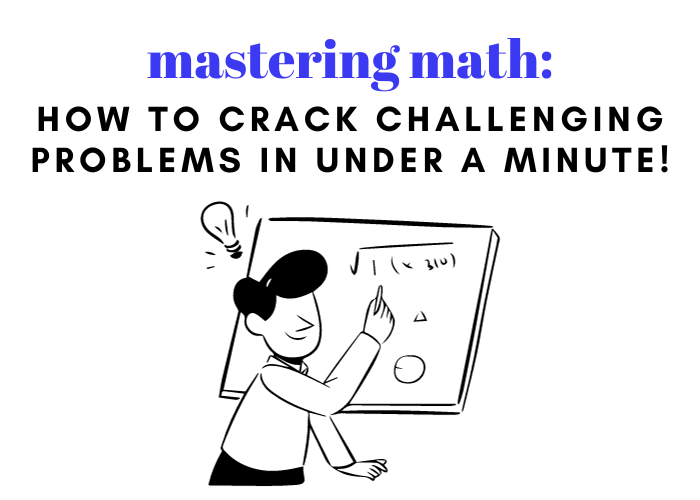

Last Updated on July 25, 2023 by user
Most math programs have one major drawback: They typically rely on teaching children how to solve problems “formulaically.”
What does that mean, exactly?
It means giving children different types of number problems and teaching them only one way to solve each type. They learn formulas and then are taught what to do when a particular problem fits a specific mold. This is particularly the case with worksheet-based programs. It must be part of any math curriculum, but it’s not the whole story.
Children learning math this way may get better grades on homework and tests. But they don’t usually become skilled problem solvers, which is one of the abilities math should teach.
If we want our kids to become problem-solvers for life, they need to learn how to unpack any problem and find the best way to solve it. This is precisely the skill that makes kids great at math, grade after grade, but also helps them perform in college, in their future careers, and in life.
But how do we teach kids to be instinctive problem-solvers for life?
Here are three principles for doing just that:

If you want your child to build a strong foundation in math for life:
Research proves that the reason most students struggle in math is not because they are simply “bad at math.” They struggle because they weren’t taught what we call “math for life.”
First, because they didn’t learn why they were learning what they were learning, they aren’t able to apply those lessons in the right contexts. They might have the knowledge they need, but that knowledge isn’t “triggered” when they see the problem, so they don’t make the connection.
Imagine you are waiting at a red light. You are ready to hit the gas, but for some reason, when the light turns green, it doesn’t trigger you to go – it doesn’t awaken in you the knowledge that green means go and you can accelerate. So you just sit there getting honked at and feeling confused. That may never happen, but it’s precisely what happens to kids when they don’t learn why they are learning what they are learning. The right trigger fails to awaken the necessary knowledge and they get stuck, unable to figure out what to do.
Second, if they’ve only learned one way to solve specific types of problems, when they see a similar problem with a twist, they don’t know what to do. What they learned only fits one mold so they can’t adapt. It’s like learning to solve an algebra equation with one formula, but not knowing how to apply that same formula if one element moves spots. For example, the child could calculate 5 x 2 – 1 but not 1 x 5 – 2.
And things get tougher as soon as word problems come into play.
Many students, even those who are “good” at math, begin to struggle as soon as they’re given word problems that require them to “dissect” the problem, understand what is being asked, and determine the best approach to solving it.
How can we fix this?
First, children need to know why they are learning what they are learning. This relates math to the real world and boosts motivation because kids can actually see a reason to invest time and effort into the lesson. If something has a real-world application, chances are it is worth learning.
In some cases, the child may not find the “why” particularly motivating, but in other cases, the opposite will happen. When the “why” is linked to a child’s interests, hobbies, or career aims, their enthusiasm will jump, and this also helps make math fun.
Second, we need to train them in learning multiple ways of solving problems. This way, students become expert problem solvers, regardless of the type of problem they face.
Children who learn multiple ways of solving problems also develop superior reasoning skills. They are then able to easily adapt and solve new problems they encounter because they have the mental flexibility and analytical abilities to unpack problems, see what needs to be done, and choose the right approach to solve it.
This also has these 3 positive effects:
In other words, they become practically unstoppable in the face of any math problem!

When children work on problems that are composed mainly of things they know but have elements that are new, they are engaged and motivated. It’s like a puzzle they want to solve. If it’s familiar enough that they know how to approach it, but challenging enough that it makes them curious, they will feel capable and want to tackle it.
Think of it like this:
Do you know that feeling when you’re doing a puzzle? You’re curious, you want to solve it, and you feel able, but it’s also just enough of a challenge.
This is how our kids should feel when doing math. A bit challenged, but a whole lot more confident and curious!
Now, for this to happen, we need to hyper-personalize learning. We need to give children problems that match their skill level, with just enough added challenges.
A one-size-fits-all approach can never work to massively boost a child’s math ability.
Why? Because the chances that this type of teaching will give them the precise help they need at each step of learning are nearly zero. But if we identify precisely what the child knows and what they need to learn, we can give them the lessons and problems that are a perfect fit.
It’s like giving them the perfect key for a lock they need to open.
When we do this, children actually learn to break down problems into manageable pieces and determine the precise steps they need to take to solve them on their own. And as their abilities improve, they actually create their own strategies for different types of problems! This is truly a delight to see!

What does it really take to achieve outstanding things? Is it talent? Creativity? Perseverance?
Surprisingly, it’s none of those…
According to pioneering psychologist Angela Duckworth, the answer is GRIT! In her book on the subject, she shows that the secret of great achievers isn’t talent, genius, or drive, but passionate perseverance, which she calls grit.
Those who achieve great things are enthused, motivated, and resilient, meaning they don’t give up when the going gets tough or take the easy way out. They’ve built the strength of character to pick themselves up and continue the pursuit of important goals… even when facing hurdles.
Do they keep repeating the same mistakes? No! In that passionate perseverance, they learn from what doesn’t work and adapt, which lets them refine their approach until finally, they succeed.
Is grit taught in school, in math programs, or by tutors? It’s actually not included in any curriculum… But it’s absolutely critical to long-term success!
When we combine hyper-personalized learning, teaching “math for life,” and grit, we empower children with the skills to learn effectively and to persevere creatively in the face of obstacles. And then what? We create a virtuous circle with awesome results!
Isn’t that what we all want for our children?


